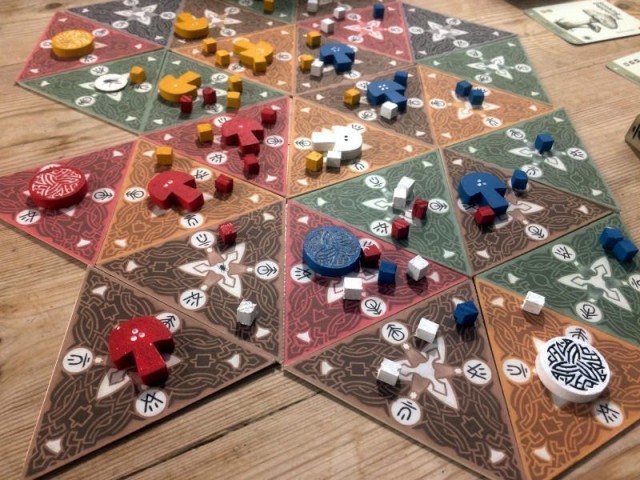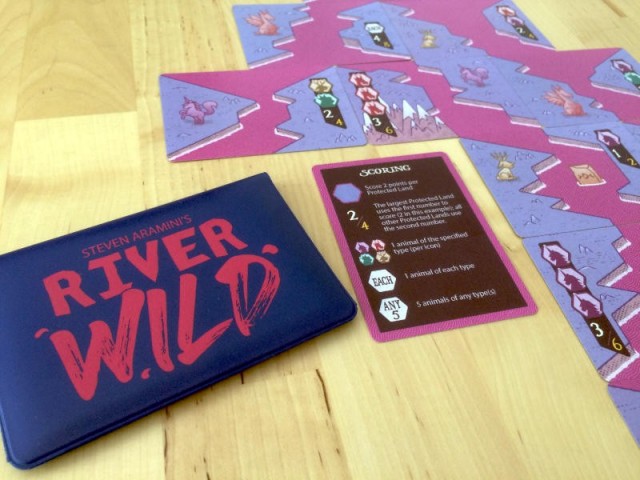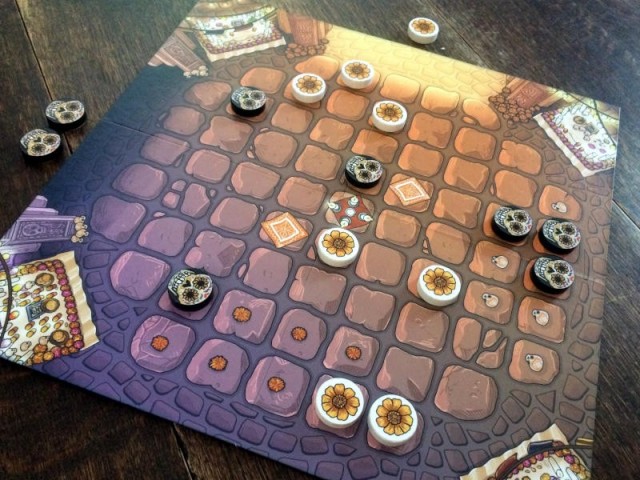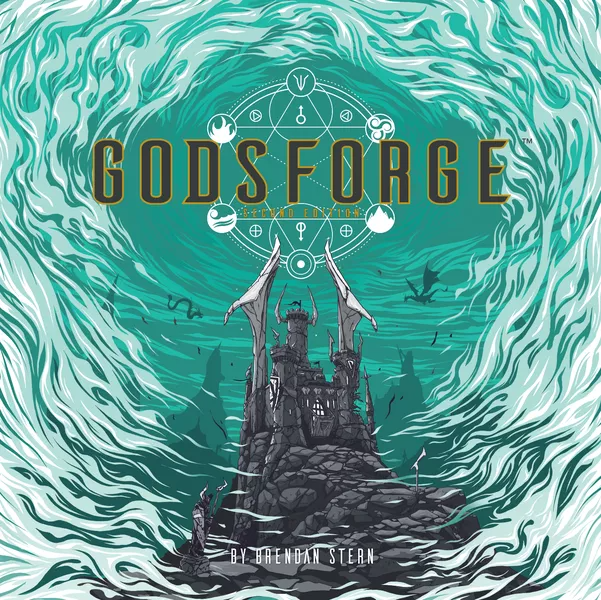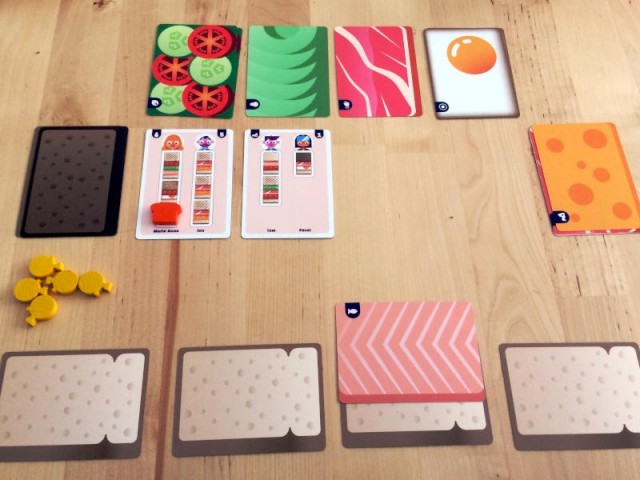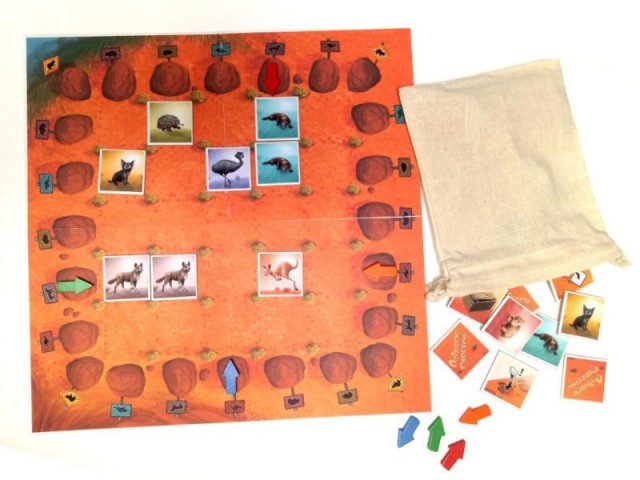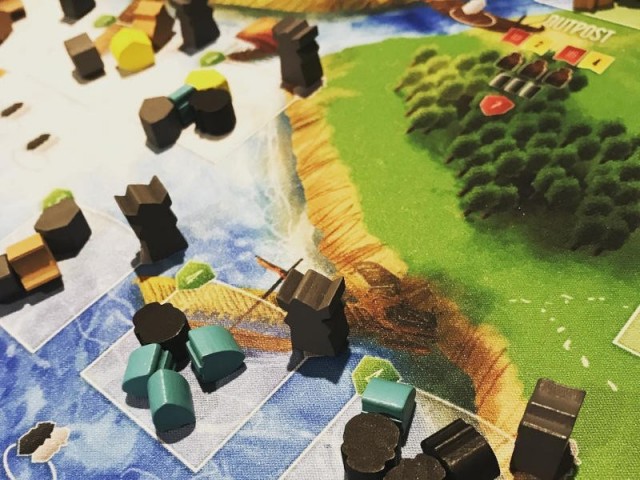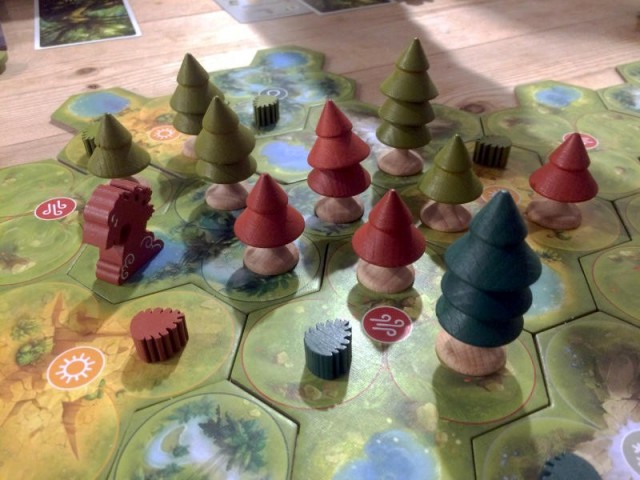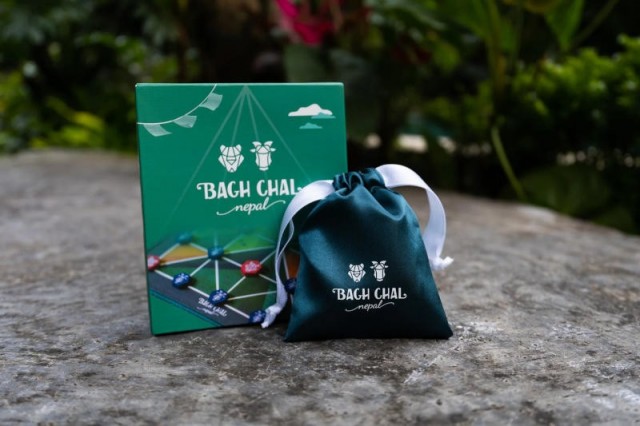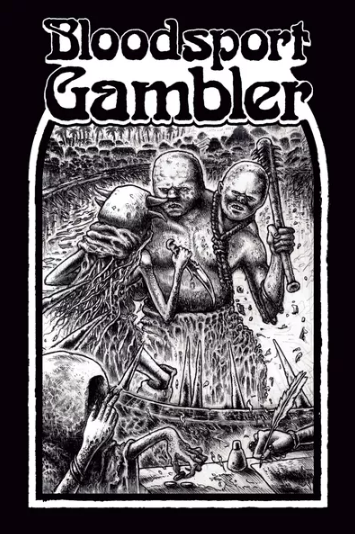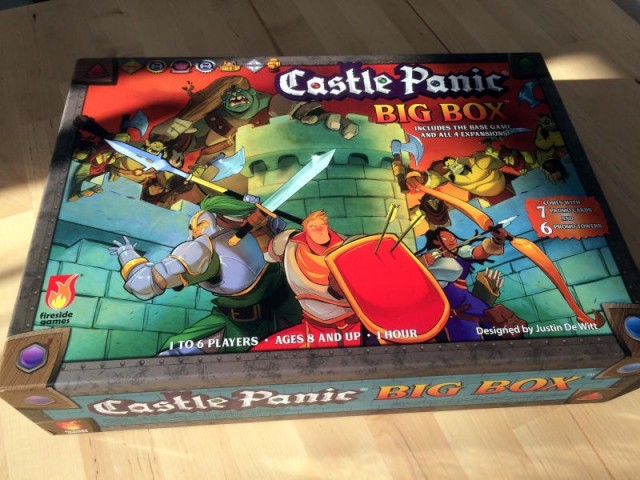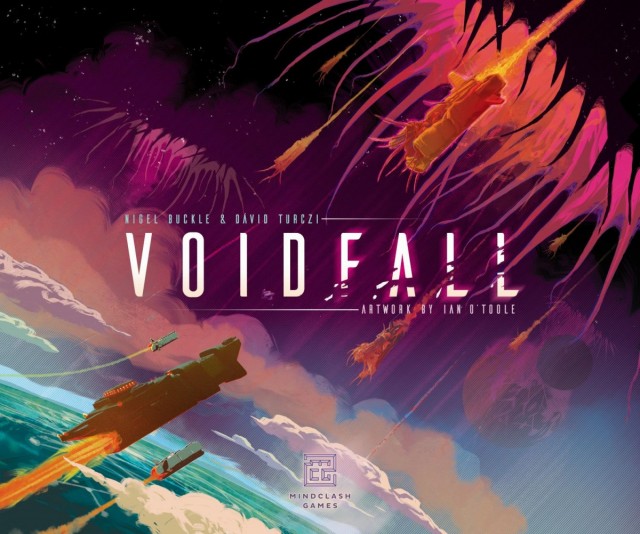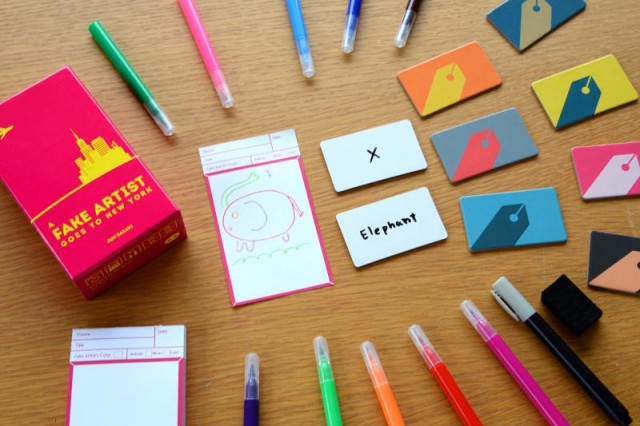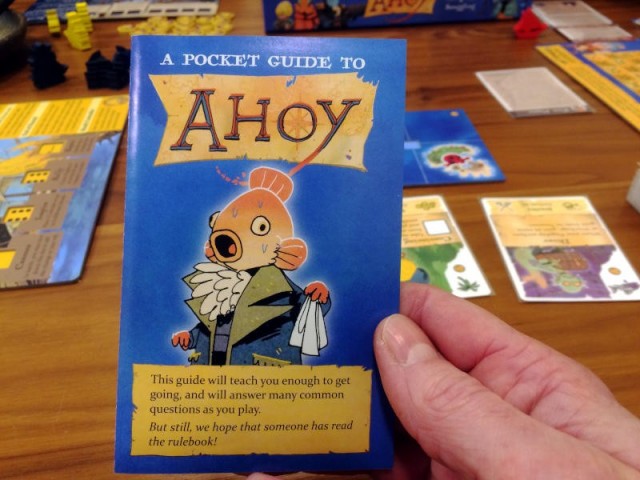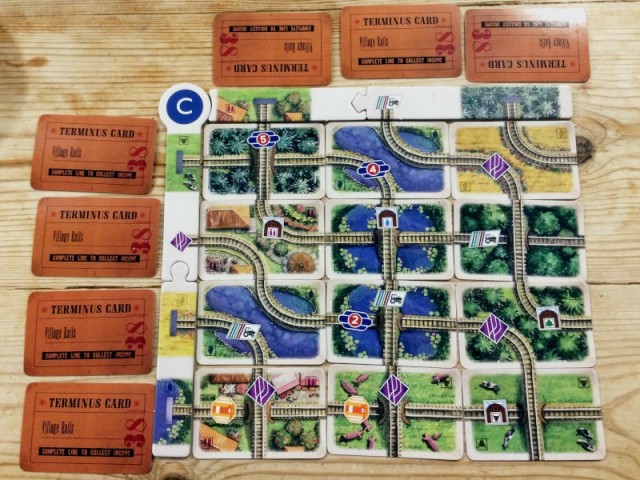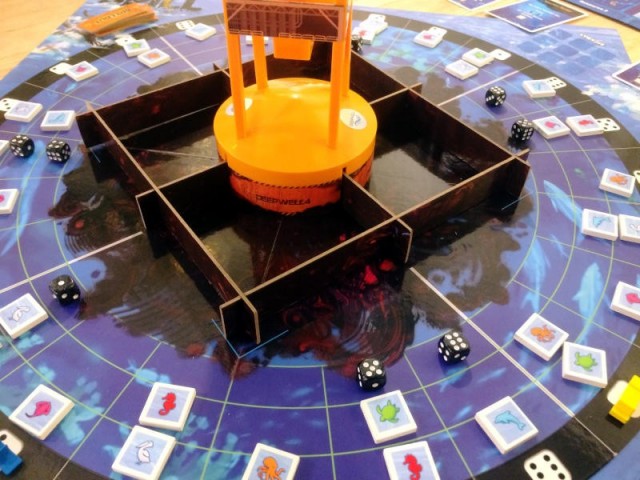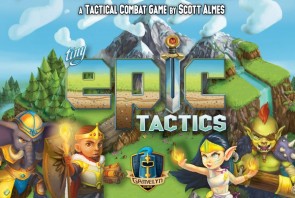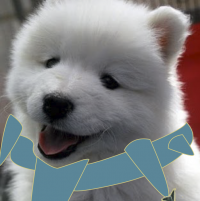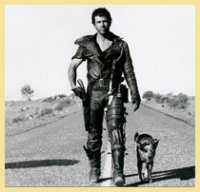Solid gameplay in a remarkable package.
Full disclosure: I'm a Tiny Epic fan. I own the entire series and have found most of them to be delightful. So it shouldn't be too surprising that I went into my initial experiences with Tiny Epic Tactics expecting the same level of excellence that I've associated with the other titles. But it's safe to say that this time I think they took it one step beyond (cue: Madness.)
Part of the attraction of the Tiny Epic series is that they all come in, well... tiny boxes, measuring 7" long x 4.75" wide x 1.5" deep. They're meant to fit in a large coat pocket or, if you're hauling along more than one (and I usually am), fit several in the average backpack. But the idea is also to get multiple types of game play (competitive, co-op, solo, multiplayer) out of the same package. They aren't intended to be games like Honshu or the nearest pocket chess set; abstracts where you play one way until you get bored of it (or become a chess master, as the case may be.) Furthermore, they've also been designed to emulate or duplicate popular game styles of the modern era. Tiny Epic Kingdoms is an area control game. Tiny Epic Zombies is a survival game. The upcoming Tiny Epic Dinosaurs is a worker placement game. And Tiny Epic Tactics is probably best labeled as the board game version of games like Final Fantasy Tactics. The genuinely remarkable thing is that the tiny box also functions as part of the board.

Each player has a team of four characters ("allies"), one of each class of Warrior, Rogue, Mage, and Beast. Each character card stipulates a special ability or spell and shows both a health tracker and what kind of attacks (melee, missile, spell) each can perform and must pay for. The "board" is a grid-overlaid, nylon cloth with the bottom half of the main box and five smaller boxes placed upon it in predetermined locations to create "3D" terrain, each printed to scale with the cloth map and with the same movement grid. And, yes, player tokens, stat tokens, cards, dice, and all terrain boxes fit comfortably in that tiny (epic) main box.
Game play is similar to other arena/battlemage type games (e.g. Wiz-War or, for a more modern example, Funkoverse.) You move your dudes around and attempt to accomplish an objective while killing ("capturing") the opponents and keeping your team alive. The main game mode (Competitive) involves three areas marked on the map. If you have the majority of figures in an area, you advance the flag token until you capture it, wihch is worth points at the end. Also worth points are opposing team members that you kill and your own guys surviving to the end. An alternate mode (Battle) is a capture-the-flag map on the reverse side of the nylon board, which also allows you to set up the terrain in whatever fashion you like. Both game modes are playable as free-for-alls betwee 2-4 players or between 2 teams of 2. There's also a solo/co-op mode that involves venturing into the dungeons printed on the inside of the boxes, while you compete against an AI-controlled team.
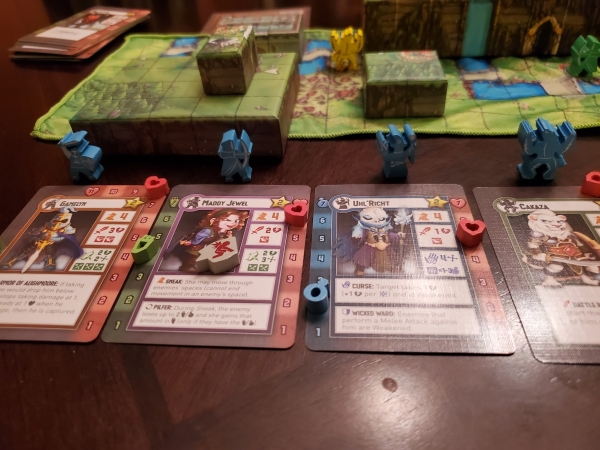
Players have three actions each turn to divide among their four allies, which basically boil down to move and/or attack in some fashion. Each character can act once for free. If they act a second time in the same turn, they become Weakened, which means they can't act in their next turn unless they're willing to take damage to do so. You also can't duplicate an action a character has already taken (so no double moves.) There's a variety of terrain on the map, from water to mountain peaks, all of which has some effect on play; from reducing damage of attacks taken to greatly enhancing range. The most notable feature are the portals scattered around, which all serve as instant gates (i.e. you step through one, you appear in front of any other.) Each player also draws a tactics card at the end of each turn with a variety of one-time effects that are all based on "If... Then..." statements, such as Search the Forest: If you move a second ally into a Forest space (so you occupy 2 Forest spaces), Then All allies in Forest spaces may immediately restore all ammo or mana [for Missile and Spell combat, respectively.]
Game action is quite interesting, but can be a little mixed in terms of results. Melee (adjacent) attacks allow you to knock back opposing units (useful for an area capture game), while missile attacks run a (very small) risk of missing, and spells can vary between a whisper and an explosion. All three of these special effects are influenced by rolls of 1-3 dice. As with most of these types of games, movement is king. If you're randomly dealt a team that only moves 3 and your opponents have dudes that all move 4 or 5 spaces, you're likely to be up against it. Howevah, once a flag token is activated in an area, it only matters who controls the area when the flag is finally moved to the last stage and captured. The slower characters generally have the more powerful attacks, so if you can clear out those wispy, fleet-footed guys when you finally arrive, you can show them who's in charge.

For example, Kor'Gak, a Warrior, can only move 3. But when he hits an enemy, he does an extra wound for each knockback that he rolls, potentially doing 5 damage, which is at least half the health of the majority of characters in the game, if not much more (many Rogues and Mages have health totals around 7.) OTOH, Senshi, another Warrior, moves 4 and does less base damage in melee (2), but can automatically deal 2 knockback in Missile combat if the target is in a straight line from him. If that sounds like there's a lot of variety in abitlies, there is. Plus, with 8 different allies in each class, that's over 4000 team combinations. Also, as a team combat game, it's important to point out that many abilities are team-focused, like Xióng Mão, a Beast who allows other nearby allies to Weaken opponents with their melee attacks, so proper positioning of your team to maximize effects is an important aspect of playing well.
The game continues until all three flags have been captured or someone has lost all four of their allies. Then you total points for flags, dudes captured, and dudes surviving and determine a winner. Like most Tiny Epic games, Tiny Epic Tactics moves quickly and becomes pretty intuitive after just a few minutes. As noted with the variety of allies, replayability is pretty high, especially with the varied terrain setup on the Battle Mode side of the map. There's also a maps expansion, giving you arctic and wastelands terrain with sleeves that fit nicely over all the terrain boxes and new cloths that give radically different maps in both modes. The game moves pretty swiftly, although considering the options for four characters can lead to a little AP on some players' parts. But the presence of the portals speeds up play and somewhat obviates that movement issue.
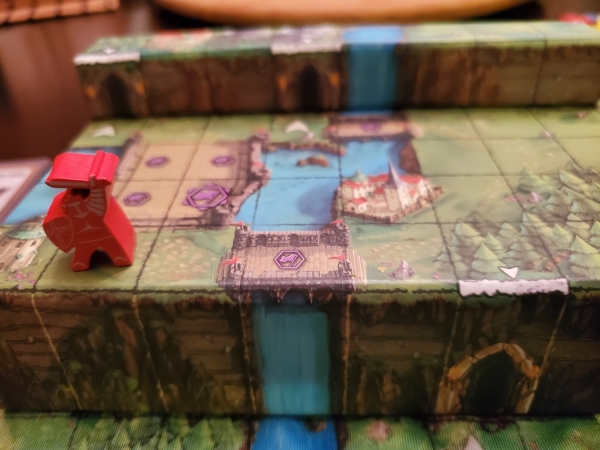
Are there downsides? Well, there may be three. First, I've played a number of games and I have to say that Missile combat feels a little superfluous in a couple ways. The damage is often so low and range so limited that it feels more important to use Rogues for their abilities, rather than for combat, which isn't necessarily a downside in a game based on teamwork. Also, ammo is supposed to be a restrictive element, with die rolls supposedly putting you in peril of running out and not being able to use said attack. But towns, where you can restore your ammo (or mana) just by passing through, are so plentiful that it has never been a concern in any of my games. Second, the teams that start on the bottom of the map (looking "north" at the largest terrain box (the bottom half of the game box)) are at a fairly significant disadvantage, distance-wise, from the "trigger" spots for the control areas. The nearest ally for teams starting in the top corners is only six spaces away from a trigger point, meaning they'll be there in two turns with even the slowest characters. The bottom teams, meanwhile, are a minimum of 8 spaces away from any of them and up to 10, depending on which point they try for. (The portals don't help here.) That, too, is two turns of movement for characters with decent speed, but the top teams have a choice of any character to be the first in position to be beat upon in trying to hold the area, whereas the bottom teams often will have to send a weaker target. However, you can probably alleviate this little inequality with a character draft, rather than a random draw at the start (bottom positions draft first, etc.) Finally, the tactics cards are often so narrow in their application that I've had people express frustration to me with their questionable quality. From my perspective, you cycle through them so quickly that I don't tend to rely on taking advantage of them, preferring to rely on the abilities of my team to get me where I want to go. They're something of an extra in a game already replete with options.

The most notable thing about Tiny Epic Tactics, even in comparison to other games in the series, is the amount of game stuffed into the box. Most of the series has a lot of content, based on both size of the container and considering what you're paying for it. But even they don't offer the kind of buildout and variety that Tactics does. It's a really remarkable design in terms of production characteristics and it's always eye-catching at the table when people see me assembling the terrain for another game. While some may think they're averse to fighting games where knowing arcane rules for each character seems like a prerequisite, Tactics' game play is so smooth and easy that even people who avoid this style of game can be swayed until they realize they actually like it; not least because of the cool maps. And the cool, epic box.
 Games
Games How to resolve AdBlock issue?
How to resolve AdBlock issue? 